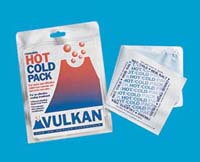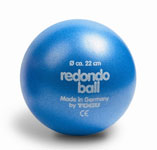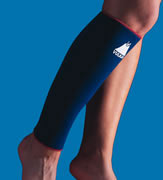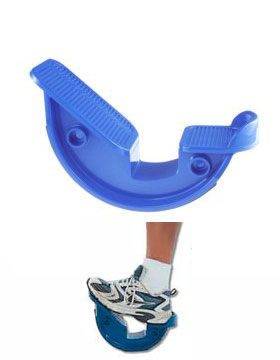Calf Muscle Strain & Football
May 13 2008 | Articles

Overview of the Calf Muscle
The Gastrocnemius, Soleus and Plantaris muscles make up the calf muscle group. These muscles are all located at the back of the lower leg. They primary function is to pull the heel bone up when the individual is starting to walk or run.
What is a Calf Muscle Strain?
Calf muscle strain or “pulled calf” occurs when there is a tear on the calf muscle due to excessive stretching. It is very common among footballers since some footballs cause extreme force on the calf muscle which stretches beyond its capabilities. Depending on the extent and severity of the damage, calf muscle strain is categorized as first, second or third degree.
A first degree calf muscle strain refers to the damage of a few muscle fibres in the calf. At this stage, signs and symptoms do not usually appear until the activity which caused the damage is over. The player will feel cramps or tightness during calf muscle stretching or contractions.
A second degree calf muscle strain involves more calf muscle fibre damage. The pain occurs immediately after the damage has been done. The individual will most likely feel pain upon stretching, contracting and touching the calf.
A third degree calf muscle strain involves extensive damage resulting to the complete rupture of the calf muscle. It is serious in nature since the pain is severe, and also characterized as burning or stabbing. The player cannot walk effectively due to extreme pain. There may be visible evidence of bruising due to internal tissue bleeding and a large muscle tissue lump above the muscle tear.
Treatment
During the initial stages, cold packs, anti-inflammatory gels and a compression bandage will help reduce pain and swelling of the calf muscle as well as stabilize the affected area. It is advised to elevate the calf muscle to limit bleeding and swelling in the torn muscles.

View Reusable ice packs
During rehabilitation, players are advised to do core strengthening and stability exercises with the aid of exercise bands and a Swiss Ball below.

Click here to view exercise balls
The bands enhance scar tissue recovery. Calf supports also reinforce the area when doing mobility exercises. First degree calf muscle strains should be rested from strenuous activities for 3 weeks, second degree strains for 4 to 6 weeks and third degree strains for 3 months.
Prevention Tips
Warming up and cooling down are very effective methods that should consistently be done at the start and end of each workout. Warm ups should last around twenty minutes to increase calf muscle temperature which prevents overstretching while cool downs should last around five to ten minutes to remove excess waste products and facilitate tissue healing.
It is also important to do stretching exercises to improve muscle strength and flexibility. Shock-absorbent insoles will help reduce impact on the calf muscles. Individuals should also rest regularly and avoid continuing to play when experiencing fatigue.

Dr Foot Sports Insoles will take pressure off the calf muscle and speed up recovery
Football Rescue Recommends Calf Sleeve
![]()
![]()
![]()
![]()
![]() 5 Star Rating
5 Star Rating

A one piece neoprene sleeve is used to provide support and compression to the Calf and shin region. Ideal for Calf muscle strain treatment and prevention
How it Works
The Vulkan Neoprene range features premium quality neoprene that offers the best possible combination of support, compression, heat retention and comfort. Vulkan Neoprene has a unique spiral lining which is critical in removing excess sweat which avoids skin problems and is more comfortable to wear.
By retaining heat there is an increase in the elasticity of the soft tissues. This is helpful for the treatment and prevention of Calf muscle strains. By increasing local blood flow, healing and recovery times can be reduced following a pulled calf.
When to use it
It can be used for the treatment and prevention of a pulled Calf muscle. It can also provide support and reassurance following recovery from a broken shin.
View the Calf Support which is ideal for calf muscle strain treatment and prevention
Also THE PRO STRETCH

The Pro Stretch Step Stretch stretching device is recommended as a way to both treat and prevent Calf Pain, Achilles tendonitis, Heel Pain and Foot Arch discomfort. While many people do remember to stretch both before and after exercising, many people are not stretching properly, and that’s where the Pro Stretch Step Stretch device is helpful.
The Pro Stretch Step Stretch device helps you properly do stretches so you don’t injure yourself.
Click here to view the pro stretch
